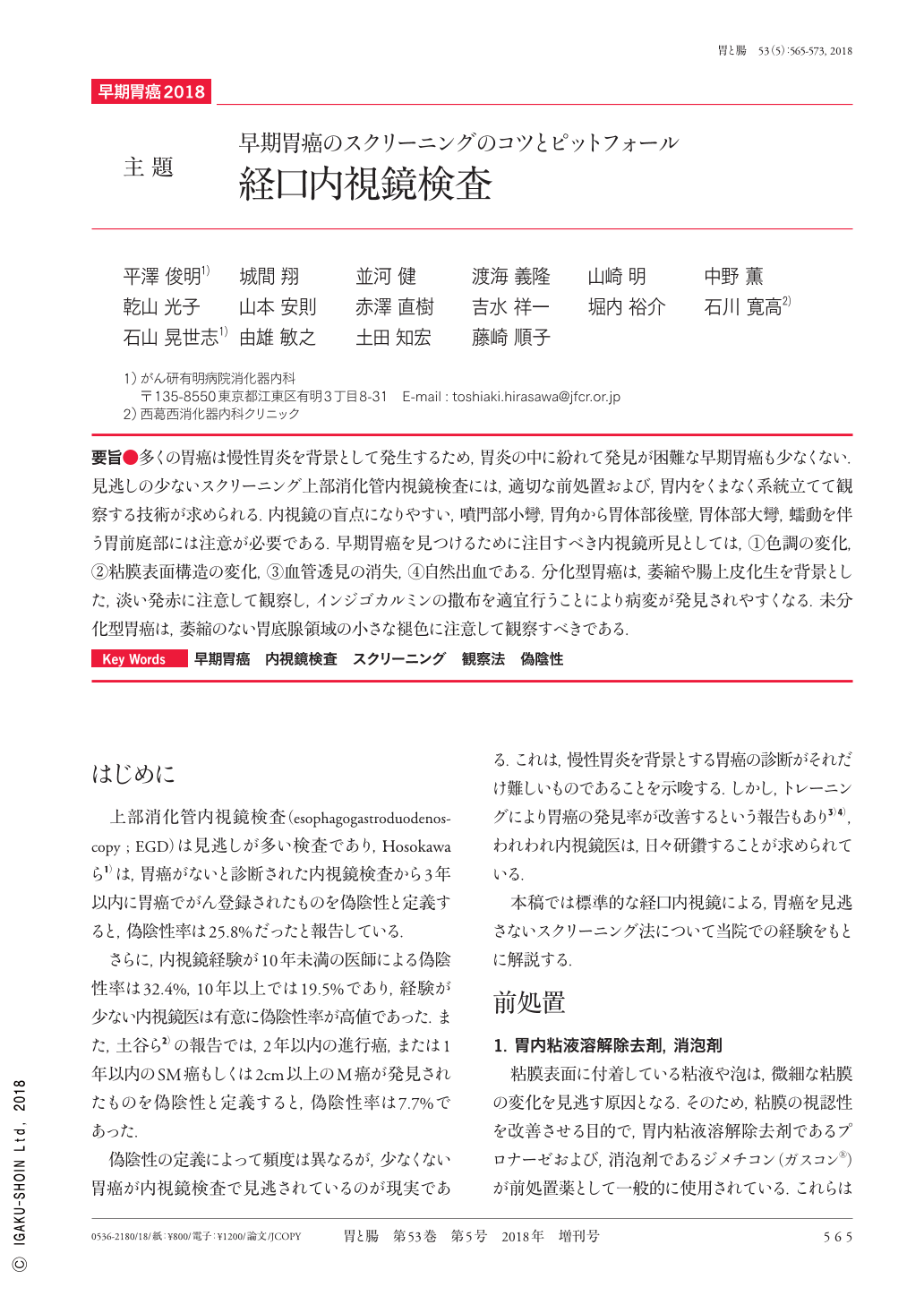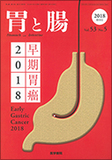Japanese
English
- 有料閲覧
- Abstract 文献概要
- 1ページ目 Look Inside
- 参考文献 Reference
- サイト内被引用 Cited by
要旨●多くの胃癌は慢性胃炎を背景として発生するため,胃炎の中に紛れて発見が困難な早期胃癌も少なくない.見逃しの少ないスクリーニング上部消化管内視鏡検査には,適切な前処置および,胃内をくまなく系統立てて観察する技術が求められる.内視鏡の盲点になりやすい,噴門部小彎,胃角から胃体部後壁,胃体部大彎,蠕動を伴う胃前庭部には注意が必要である.早期胃癌を見つけるために注目すべき内視鏡所見としては,①色調の変化,②粘膜表面構造の変化,③血管透見の消失,④自然出血である.分化型胃癌は,萎縮や腸上皮化生を背景とした,淡い発赤に注意して観察し,インジゴカルミンの撒布を適宜行うことにより病変が発見されやすくなる.未分化型胃癌は,萎縮のない胃底腺領域の小さな褪色に注意して観察すべきである.
Gastric cancer usually results from chronic gastritis, so early gastric cancers may be difficult to detect because they are misdiagnosed as gastritis. Therefore, for an accurate diagnosis of gastric cancer, a screening endoscopy is required to examine the entire stomach systematically. During this procedure, it is important to be aware of the endoscope blind spots:the lesser curvature of the cardia, the wall of the angulus posterior to the body, the greater curvature of the body, and the antrum during peristalsis. Endoscopic findings characteristic of early gastric cancer are:(1)color change,(2)mucosal surface change,(3)spontaneous bleeding, and(4)invisible mucosal vasculature. Differentiated-type early gastric cancer can be diagnosed by the presence of mild red lesions in the mucosal background accompanied by atrophy and intestinal metaplasia. Indigo carmine dye spraying is useful for detecting some differentiated-type early gastric cancers. In contrast, undifferentiated-type early gastric cancer presents as a small discolored lesion in a non-atrophic area.

Copyright © 2018, Igaku-Shoin Ltd. All rights reserved.


